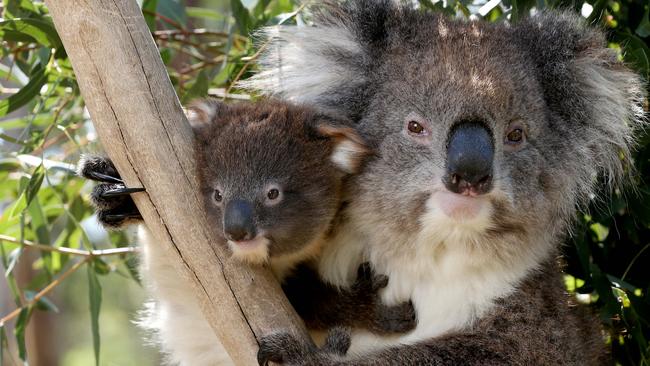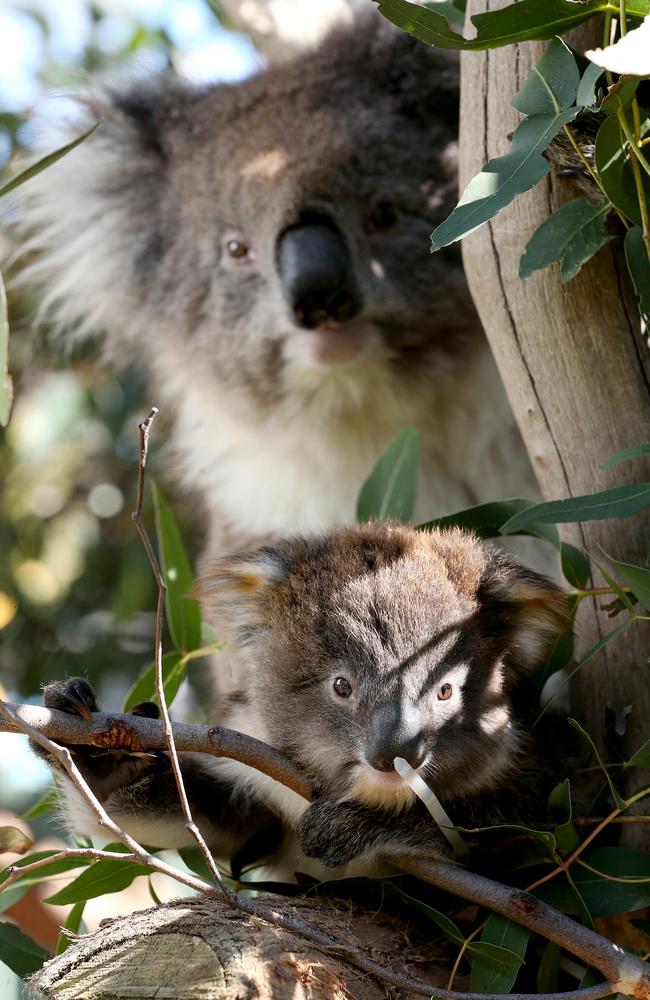Koala populations in Queensland ‘functionally extinct’ experts warn
ANIMAL rights advocates believe koala populations in Queensland are “functionally extinct” and have a dire warning for Australia’s biodiversity.

ANIMAL advocates are calling on the government to urgently intervene to save koala populations from extinction.
Numbers of the iconic animal have been depleted in Queensland in recent years in large part due to lax land clearing laws and little government oversight to protect habitats.
Australia Koala Foundation chief executive Deborah Tabart described koalas in the region of southeast Queensland as “functionally extinct” and said the whole system of wildlife protection was broken.
Along with the Australian branch of the World Wildlife Foundation, Ms Tabart produced research that reveals more than 80,000 hectares have been cleared in the past two years in the state.
In a fiery interview on ABC radio on Wednesday, she said 72 per cent of those clearing applications had not been referred to the federal government despite the koala being listed as a vulnerable species under federal law since May 2012.
“The whole system is broken is how I feel. There’s always another excuse from a minister, a Prime Minister,” she said.
“The federal government was supposed to put in a recovery program in 2014 ... it’s now 2016 and they’ve done nothing.”
Ms Tabart believes scientific evidence is often missing from the equation when it comes to land clearing and government policy around Australia’s biodiversity.
In a demonstration outside the Queensland parliament on Wednesday, Martin Taylor from the WWF called on MPs to “respect the science” and be on the “right side of history”.
Dr Taylor would like to see strong laws brought back to govern land clearing exercises.
“The Campbell Newman government broke an election promise and did not renew the Vegetation Management Act and now land clearing is out of control,” he told news.com.au.
“Unless we stop the bulldozers, the koala will go extinct in Queensland,” he added.
WWF is urging all members of the Queensland Parliament to respect the science and support land clearing controls pic.twitter.com/x1t6CFjmfM
— WWF_Australia (@WWF_Australia) August 17, 2016
Ms Tabart said koala populations in Queensland were “functionally extinct” meaning “the chances are there’s not enough to recover”.
There has been contention over the different roles played by the state and federal governments and Ms Tabart lamented that there has been “absolutely no accountability”.
After an extended trip around the country seeing the affects of climate change and environmental degradation Ms Tabart had a bleak assessment of the country.
“This country is in ecological collapse,” she said. “I don’t believe most of those politicians have any idea.”
Stopping short of calling the language alarmist, Bill Ellis from the Koala Ecology Group at the University of Queensland said things were a little different for koala populations outside the highly urbanised area of southeast Queensland.
He admitted koalas in the area “are in a fair bit of trouble” and said “what we’re doing to protect them isn’t working” but in central Queensland and in the west of the state a number of healthy populations were doing well.
He pointed out that disease, traffic accidents and dogs were also a major contributor to declining population numbers in southeast Queensland and those concerned about the dwindling numbers were “right to be depressed”.
Dr Ellis also pointed out that there are pockets of dense koala population in Victoria — which actually acted as an impediment to getting the animal listed as vulnerable by the federal government.
However despite the listing, not much has changed as “there is a fair bit of confusion about what that really means,” he said.
It’s certainly a mortality issue rather than a reproductive issue. With a gestation period of 35 days, from the age of three female koalas typically produce one joey a year for about seven to 10 years.
Dr Ellis said when visiting koala communities around the country about 70 per cent of the females tend to have a joey.
Despite various government statistics such as a recent finding that put the decline of koalas on Queensland’s koala coast at 80.3 per cent, it is very difficult to get a handle on the actual numbers.
There hasn’t been a comprehensive census in nearly three decades and “we don’t have a good handle on the number of koalas nationally,” Dr Ellis said.
Dr Taylor estimated the number of koalas in Queensland to be in the low tens of thousands.




